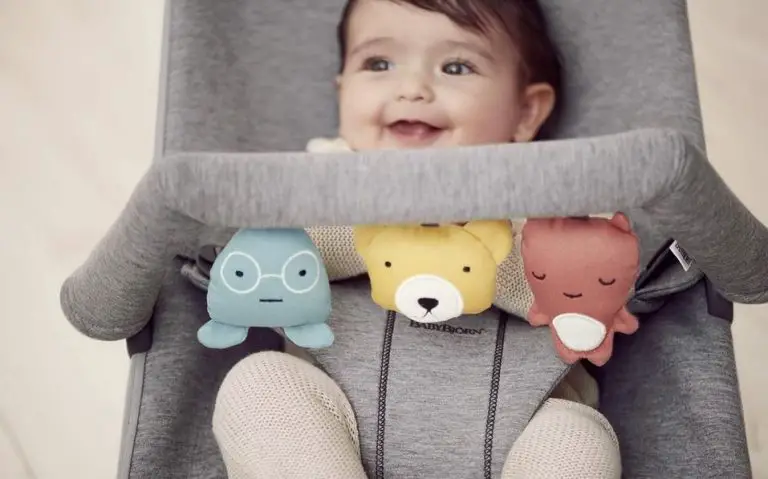Understanding Newborn Sleep Patterns: A Guide For Tired Parents
Are you a new parent struggling to understand your newborn’s sleep patterns? You’re not alone. Many parents find themselves exhausted and confused by their baby’s erratic sleeping habits. But fear not, there is hope!
With a little understanding of the biology behind newborn sleep and some practical tips for creating a sleep-friendly environment, you can help your little one (and yourself) get the restful nights you both need.
Note: This post may contain affiliate links, which means if you buy from my link I might make a small commission. This does not affect the price you pay. See the full affiliate disclosure here.
First things first, it’s important to remember that newborns have very different sleep patterns than adults. Their tiny bodies are still developing and adjusting to life outside the womb. As such, they require much more sleep than we do, but in shorter intervals throughout the day and night.
It may seem like your baby is always sleeping or never sleeping at all, but rest assured that this is completely normal. By understanding your baby’s unique needs and learning how to create a comfortable sleep environment, you can help them develop healthy sleeping habits from an early age.

The Biology of Newborn Sleep
It’s incredible how our little ones are wired to snooze, and understanding the biology behind it all can bring a sense of wonder and amazement.
Newborns sleep for around 16-17 hours a day, with sleep cycles lasting between 50 minutes to an hour. These cycles consist of two types of sleep: active or rapid eye movement (REM) sleep, and quiet or non-rapid eye movement (NREM) sleep.
During REM sleep, the brain is highly active, which helps with its development. This stage of sleep allows the brain to process new information and consolidate memories.
NREM sleep, on the other hand, is when physical growth takes place as hormones that promote growth are released during this time. It’s important to note that newborns spend more time in REM sleep than adults do because their brains need more stimulation for development.
Understanding these different stages and their importance can help parents create a conducive environment for their newborn’s growth and development through healthy sleeping patterns.
Creating a Sleep-Friendly Environment
Transforming your baby’s sleeping quarters into a calming oasis is crucial for promoting healthy and restful sleep. As a tired parent, you may feel like creating the perfect environment is impossible, but there are simple steps you can take to make it happen.
Here are some tips to get started:
- Use white noise machines to mimic the sound of the womb and block out external noises that could wake up your baby.
- Implement swaddling techniques to help your little one feel secure and prevent them from startling themselves awake.
- Keep the room temperature between 68 to 72 degrees Fahrenheit to ensure your baby stays comfortable throughout the night.
By taking these small steps, you can create a soothing environment that will help your newborn fall asleep faster and stay asleep longer.
Remember, consistency is key when it comes to promoting healthy sleep habits in infants. With patience and perseverance, both you and your little one can enjoy peaceful nights filled with much-needed rest.
Common Sleep Challenges
Dealing with common sleep challenges can be tough, but don’t worry – there are simple solutions to help your baby get the rest they need.
One of the most common challenges is sleep regression, which occurs when your baby’s sleep pattern suddenly changes, usually around 4 months old. During this time, your baby may wake up more frequently during the night or have a harder time falling asleep. This can be frustrating for parents who have finally gotten their little one into a good routine.
To help combat sleep regression, you may want to consider using sleep training techniques. These methods involve teaching your baby how to self-soothe and fall back asleep on their own when they wake up in the middle of the night.
There are a variety of different approaches you can take, such as the Ferber method or the Weissbluth method. It’s important to do some research and speak with your pediatrician before trying any sleep training technique to ensure it aligns with your parenting style and will be safe for your child.

Tips for Overcoming Sleep Challenges
If you’re struggling with getting your baby to sleep through the night, don’t worry – there are simple tips and tricks that can help you overcome any sleep challenges you may be facing.
First, establish a consistent nighttime routine for your baby. This could include a warm bath, reading a book, singing a lullaby or any other calming activities that signal to your little one that it’s time for bed. Stick to this routine every night so your baby learns when it’s time to wind down and go to sleep.
Secondly, consider trying different sleep training techniques. There are various methods such as the Ferber method or the Cry It Out method that have been successful for many parents. These techniques involve gradually reducing the amount of intervention from parents during bedtime until the baby learns how to soothe themselves and fall asleep independently.
Remember, every baby is different so what works for one may not work for another. Be patient and keep experimenting until you find what works best for your family.
Monitoring Your Baby’s Sleep
As a parent, monitoring your baby’s sleep is crucial for their growth and development. Sleep logs can be helpful in tracking how much your baby sleeps during the day and night.
Paying attention to your baby’s sleep cues can also help you adjust your sleep strategies as needed, ensuring they get the restful sleep they need to thrive.
Remember to stay patient and flexible as you navigate this journey of understanding your little one’s unique sleeping patterns.
Sleep Logs
Keep track of when your baby is sleeping and waking up by using sleep logs. These logs are an essential tool for understanding your newborn’s sleep patterns, helping you to better anticipate their needs and develop a healthy sleep routine. Here are some benefits of using sleep logs:
- Helps identify patterns: Sleep logs make it easier to see when your baby tends to wake up or fall asleep, which can help you establish a more predictable schedule.
- Identifies potential issues: By tracking how long your baby sleeps and how often they wake up, you may be able to identify any underlying issues that may be affecting their sleep, such as discomfort or hunger.
- Provides valuable information: Having accurate records of your baby’s sleeping habits can assist healthcare professionals in providing the best possible care for your little one.
There are many free templates available online that can be easily printed out and used as sleep logs. Alternatively, you could create a simple chart with columns for date, time slept/woken up, length of nap/awake period, and notes on any changes in routine or behavior. Remember to keep the log close by during the night so that you don’t forget any important details!

Tracking Sleep Cues
Tracking your baby’s sleep cues is crucial for helping you anticipate their needs and create a nurturing environment that promotes healthy rest. Recognizing signs of tiredness, such as rubbing eyes, yawning, or fussiness, can help you time naps and bedtime more effectively.
By paying attention to these cues, you can also avoid overstimulating your little one and prevent them from becoming overtired. Sleep associations are another important aspect of tracking your baby’s sleep cues. These are the signals that let your baby know it’s time to sleep, like a favorite blanket or pacifier.
When used consistently, these associations can become powerful triggers for relaxation and help your baby feel secure in their sleeping environment. As you track your baby’s cues and establish positive sleep associations, you’ll find that they begin to settle into a more predictable sleep routine – which means more restful nights for everyone!
Adjusting Sleep Strategies as Needed
Now that you’ve gotten the hang of tracking your baby’s sleep cues, it’s time to talk about adjusting your sleep strategies as needed. As your newborn grows and develops, their sleep patterns will change and what worked for them before may no longer be effective.
It can be frustrating when a previously great sleeper suddenly starts waking up multiple times during the night or fighting naps, but this is completely normal and often due to something called sleep regression. Sleep regression typically occurs around 4 months, 8-10 months, and 18 months of age.
During these times, your baby’s brain is going through significant growth and development which can disrupt their usual sleeping patterns. Additionally, babies develop sleep associations – habits or cues they associate with falling asleep such as nursing or being rocked – which can make it difficult for them to fall asleep on their own without those associations.
To help navigate these changes in your baby’s sleep patterns, here are some strategies you can try:
- Establish a consistent bedtime routine
- Encourage self-soothing techniques
- Gradually wean off sleep associations
By adjusting your approach to fit your baby’s changing needs, you’ll be able to help them get the restful sleep they need for optimal growth and development.
Conclusion
Congratulations on making it through the newborn sleep stage! It’s been a challenging journey, but you’ve learned so much about your baby’s sleep patterns and how to create a sleep-friendly environment.
Remember that newborns have different sleep needs than adults, and it’s important to be patient as they develop their own sleep routines.
If you’re still experiencing some common sleep challenges, don’t worry – there are plenty of tips and tricks to help you overcome them. Whether it’s establishing a bedtime routine, offering comfort during night wakings, or adjusting feeding schedules, there are things you can do to improve your baby’s quality of sleep (and yours too!).
As always, keep an eye on your baby’s sleeping habits and consult with a healthcare provider if you have any concerns. With time and patience, you’ll both settle into a healthy sleeping routine that works for everyone involved.
Sweet dreams!






